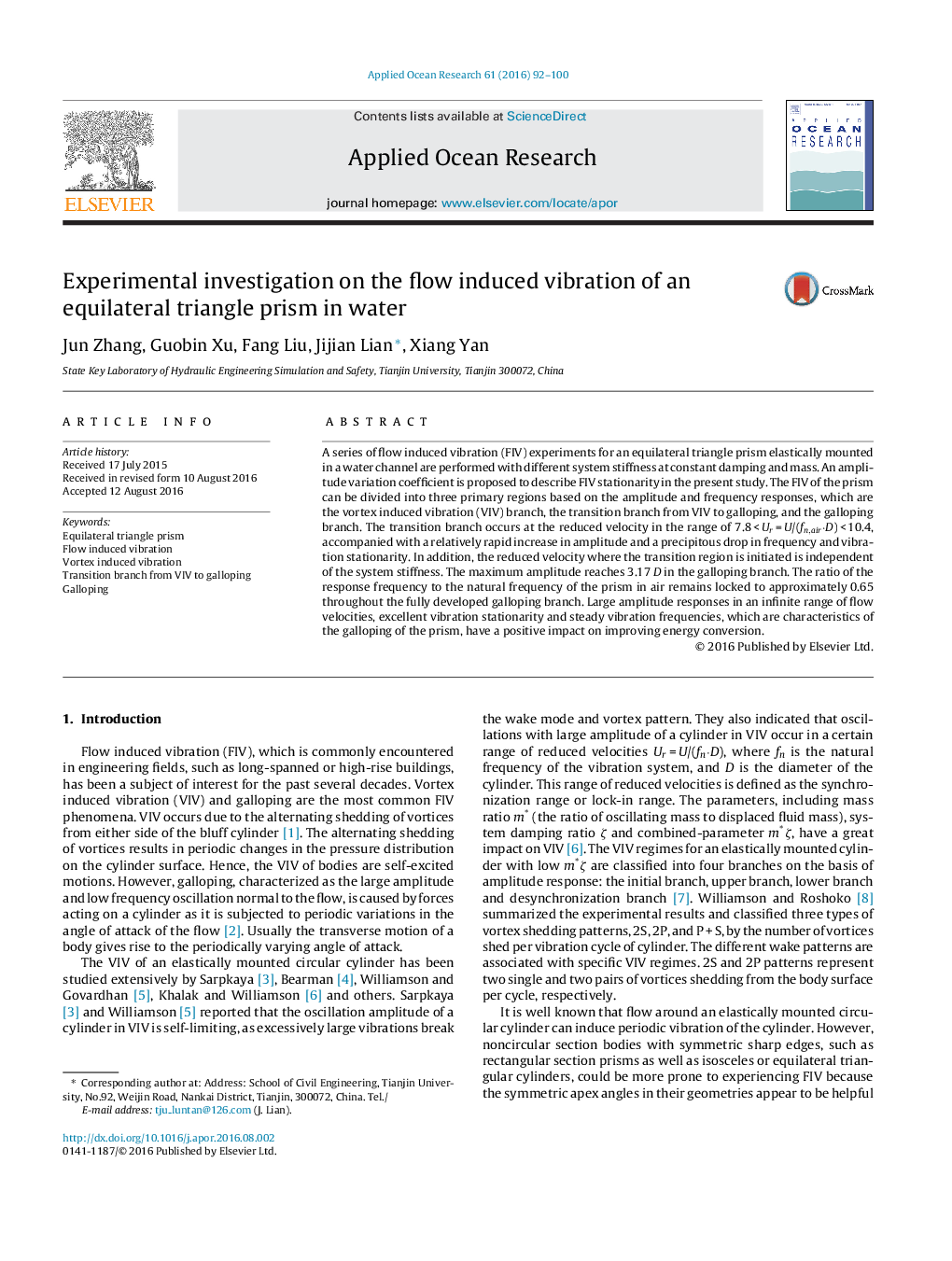| Article ID | Journal | Published Year | Pages | File Type |
|---|---|---|---|---|
| 5473332 | Applied Ocean Research | 2016 | 9 Pages |
Abstract
A series of flow induced vibration (FIV) experiments for an equilateral triangle prism elastically mounted in a water channel are performed with different system stiffness at constant damping and mass. An amplitude variation coefficient is proposed to describe FIV stationarity in the present study. The FIV of the prism can be divided into three primary regions based on the amplitude and frequency responses, which are the vortex induced vibration (VIV) branch, the transition branch from VIV to galloping, and the galloping branch. The transition branch occurs at the reduced velocity in the range of 7.8 < Ur = U/(fn,air·D) < 10.4, accompanied with a relatively rapid increase in amplitude and a precipitous drop in frequency and vibration stationarity. In addition, the reduced velocity where the transition region is initiated is independent of the system stiffness. The maximum amplitude reaches 3.17 D in the galloping branch. The ratio of the response frequency to the natural frequency of the prism in air remains locked to approximately 0.65 throughout the fully developed galloping branch. Large amplitude responses in an infinite range of flow velocities, excellent vibration stationarity and steady vibration frequencies, which are characteristics of the galloping of the prism, have a positive impact on improving energy conversion.
Related Topics
Physical Sciences and Engineering
Engineering
Ocean Engineering
Authors
Jun Zhang, Guobin Xu, Fang Liu, Jijian Lian, Xiang Yan,
